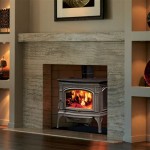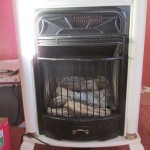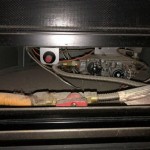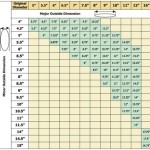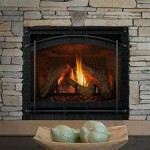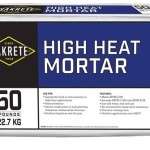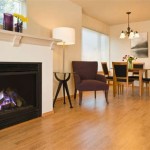How To Reface a Fireplace Surround and Hearth
Refacing a fireplace surround and hearth is a strategic home improvement project that can dramatically alter the aesthetic appeal of a living space without the extensive demolition and reconstruction associated with a complete fireplace replacement. This process involves applying new facing materials over the existing fireplace structure, providing a fresh, updated look while minimizing disruption and cost. Careful planning and meticulous execution are essential for a successful fireplace refacing project.
Before undertaking a refacing project, a thorough assessment of the existing fireplace structure is required. This assessment includes inspecting the surround and hearth for any signs of structural damage, such as cracks, crumbling mortar, or water damage. Addressing any underlying structural issues is paramount before proceeding with the refacing process. Failure to do so could compromise the integrity of the new facing materials and potentially create safety hazards.
The choice of refacing materials significantly impacts the overall aesthetic and functionality of the fireplace. Common material options include natural stone veneer, manufactured stone veneer, tile, brick veneer, and wood. Each material offers distinct characteristics in terms of appearance, durability, maintenance requirements, and cost. Selecting materials that complement the architectural style of the home and align with personal preferences is crucial. Moreover, it is essential to ensure that the chosen materials are suitable for fireplace applications, considering their heat resistance and non-combustibility.
Preparation and Demolition
The initial stage of refacing involves preparing the work area and selectively removing existing materials. Protect the surrounding floor and furniture with drop cloths or plastic sheeting to prevent damage from dust and debris. Remove any existing trim, molding, or decorative elements from the fireplace surround. If the existing hearth is damaged or significantly outdated, consider removing it entirely. When removing materials, exercise caution to avoid damaging the underlying structure. Use appropriate tools such as pry bars, chisels, and hammers to carefully detach the old facing materials. Dispose of the removed materials responsibly, following local regulations for construction waste disposal.
After removing the existing materials, thoroughly clean the exposed surface of the fireplace surround and hearth. Remove any residual adhesive, mortar, or debris using a scraper, wire brush, and vacuum cleaner. Patch any minor imperfections or cracks in the masonry with a suitable patching compound. Ensure that the surface is clean, dry, and structurally sound before proceeding to the next stage.
Applying a bonding agent or scratch coat to the existing surface is often recommended to enhance adhesion between the new facing materials and the substrate. A bonding agent, typically a liquid polymer, creates a textured surface that promotes better bonding. A scratch coat, a thin layer of mortar, provides a similar effect. Apply the bonding agent or scratch coat according to the manufacturer's instructions, allowing it to dry completely before proceeding.
Material Installation: Stone and Brick Veneer
When using stone or brick veneer, careful planning of the layout and pattern is essential for achieving a visually appealing result. Dry-fit the veneer pieces before applying mortar to ensure a proper fit and alignment. Consider the desired joint size and pattern variations. Mixing stones or bricks from different boxes or pallets can help create a more natural and varied appearance.
Apply a layer of mortar to the back of each veneer piece using a notched trowel. The notched trowel creates ridges in the mortar, which enhance adhesion. Press the veneer piece firmly onto the prepared surface, ensuring that it is level and properly aligned. Use spacers to maintain consistent joint widths between the veneer pieces. Tap the veneer piece gently with a rubber mallet to set it securely in place. Remove any excess mortar that squeezes out from the joints.
Continue installing the veneer pieces, working from the bottom up. Stagger the joints between rows for a more visually appealing and structurally sound installation. Use a level to periodically check that the veneer is installed straight and plumb. Cut veneer pieces as needed to fit around corners, edges, and other obstructions. Use a wet saw or masonry saw for precise cuts. Allow the mortar to cure completely according to the manufacturer's instructions before applying grout or sealant.
Material Installation: Tile
Tile installation follows a similar process to stone and brick veneer installation, but with some key differences. Choose a tile adhesive that is appropriate for the type of tile being used and the substrate material. Apply the tile adhesive to the prepared surface using a notched trowel. The size of the notch will depend on the size of the tile. Spread the adhesive evenly, covering the entire area to be tiled.
Position the tiles onto the adhesive, pressing them firmly into place. Use tile spacers to maintain consistent joint widths between the tiles. Check the alignment of the tiles frequently using a level and adjust as needed. Cut tiles as needed to fit around corners, edges, and other obstructions. Use a tile cutter or wet saw for precise cuts. After all the tiles are installed, allow the adhesive to cure completely according to the manufacturer's instructions.
Once the adhesive has cured, apply grout to fill the joints between the tiles. Choose a grout color that complements the tile color and the overall design. Apply the grout using a grout float, spreading it evenly over the tile surface. Remove excess grout with a damp sponge, rinsing the sponge frequently. Allow the grout to dry completely, then buff the tile surface with a clean, dry cloth to remove any grout haze.
Finishing and Detailing
Once the veneer, brick, or tile is installed and the mortar or adhesive has cured, the finishing touches can be applied. This includes grouting or mortaring the joints, applying sealant, and reinstalling trim or molding. Grouting or mortaring the joints fills the gaps between the facing materials and creates a more cohesive and aesthetically pleasing appearance. Choose a grout or mortar color that complements the facing materials and the overall design.
Applying a sealant to the fireplace surround and hearth protects the facing materials from moisture and stains. Choose a sealant that is specifically designed for use on stone, brick, or tile. Apply the sealant according to the manufacturer's instructions. Reinstall any trim or molding that was removed during the initial demolition phase. This adds a finishing touch and covers any exposed edges or gaps.
Inspect the completed fireplace refacing project carefully, ensuring that all materials are securely installed and that all joints are properly filled and sealed. Address any imperfections or inconsistencies as needed. Clean the fireplace surround and hearth thoroughly, removing any dust, debris, or residue. Allow the sealant to dry completely before using the fireplace. Follow all safety precautions and guidelines when operating the fireplace.
Regular maintenance is essential for preserving the beauty and longevity of the refaced fireplace. Clean the fireplace surround and hearth periodically with a mild soap and water solution. Avoid using harsh chemicals or abrasive cleaners, which can damage the facing materials. Inspect the fireplace regularly for any signs of damage, such as cracks, crumbling mortar, or water damage. Address any issues promptly to prevent further deterioration.
By following these steps and exercising careful attention to detail, a significant transformation of a fireplace can be achieved. Refacing provides a cost-effective and visually impactful method for updating a living space, enhancing its overall aesthetic appeal and potentially increasing its value.

Reface Your Fireplace Fresh New Look Hearth Remodeling

Fireplace Refacing So You Want To Bob Vila

Fireplace Refacing So You Want To Bob Vila

Our Transformed Fireplace Before After Reface Diy Update

Diy Fireplace Makeover Wood Slat

How To Reface A Fireplace Surround And Hearth Surrounds

Custom Fireplace Surround Refacing Many Surrounds To Choose From

How To Update The Look Of Your Fireplace

Fireplace Refacing So You Want To Bob Vila

47 Stellar Diy Fireplace Remodel Makeover Ideas Remodelaholic


